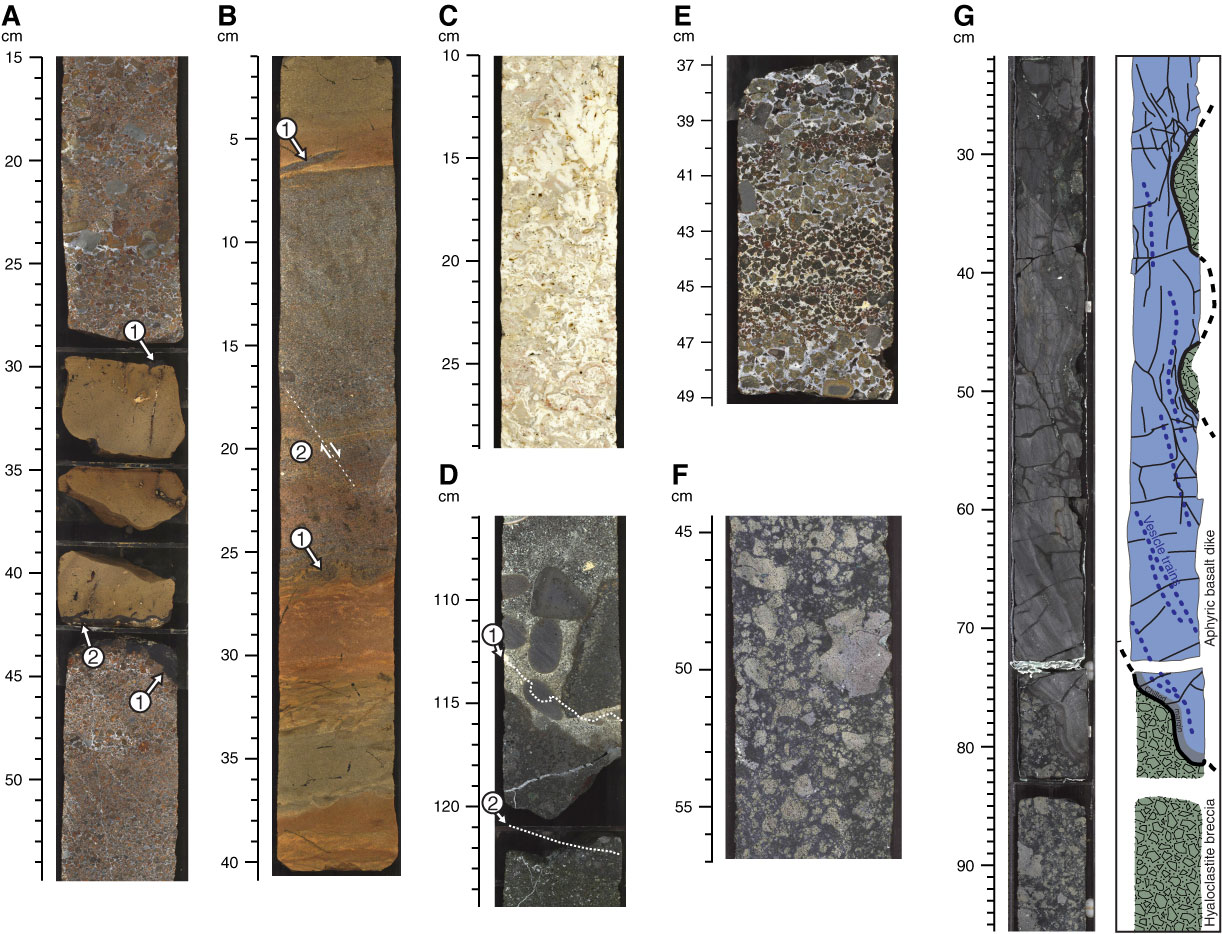
Figure F51. Scanned core images of a selection of representative lithologies, Hole U1376A. A. (1) Heterolithic layered multicolor basalt breccia and (2) heterolithic bioturbated volcanic sandstone from Subunit IA (interval 330-U1376A-1R-1, 15–55 cm). Arrows show ferromanganese encrustations with chalk. Subunit IA likely consists of several hyperconcentrated flow deposits (layered breccias) and turbidites (bioturbated sandstones) emplaced in a pelagic or hemipelagic environment. B. Monolithic bioturbated brown coarse tuff (top and bottom) and heterolithic multicolor volcanic sandstone (center) from Subunit ID (interval 330-U1376A-3R-4, 1–41 cm). Compaction features were observed: (1) loadcasts and (2) small synsedimentary fault. Subunit ID likely consists of turbidites and coarse tuff deposited in a hemipelagic or pelagic environment. C. Algal boundstone with a branching growth form of alga from Subunit IIA interpreted as an algal reef (interval 330-U1376A-3R-5, 10–29 cm). D. Basalt conglomerate with shallow-marine bioclasts from Subunit IIB showing erosional contacts in (1) basalt conglomerate and (2) underlying volcanic basement from Unit III (interval 330-U1376A-5R-3, 106–125 cm). E. Volcanic breccia composed of angular basalt clasts cemented with calcite from Subunit IC (interval 330-U1376A-1R-4, 37–49 cm; see also Fig. F53D). F. Hyaloclastite breccia from lithologic Unit 21 in stratigraphic Unit IV (interval 330-U1376A-16R-4, 45–57 cm). The yellowish-gray color in the clasts indicates the presence of fresh glass. G. Scanned core image (left) and interpretation (right) of aphyric dike margin from lithologic Unit 20 (interval 330-U1376A-15R-2A. 22–95 cm). Rows of dark blue dots = vesicle trains.

Previous | Close | Next | Top of page